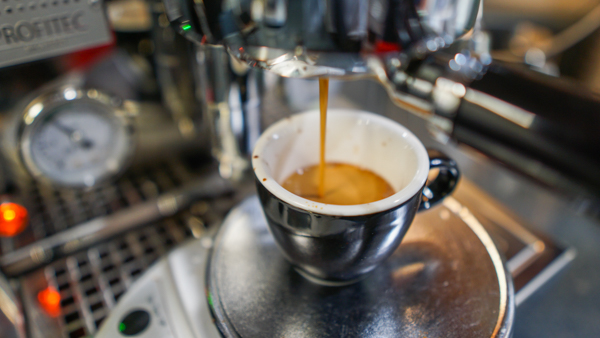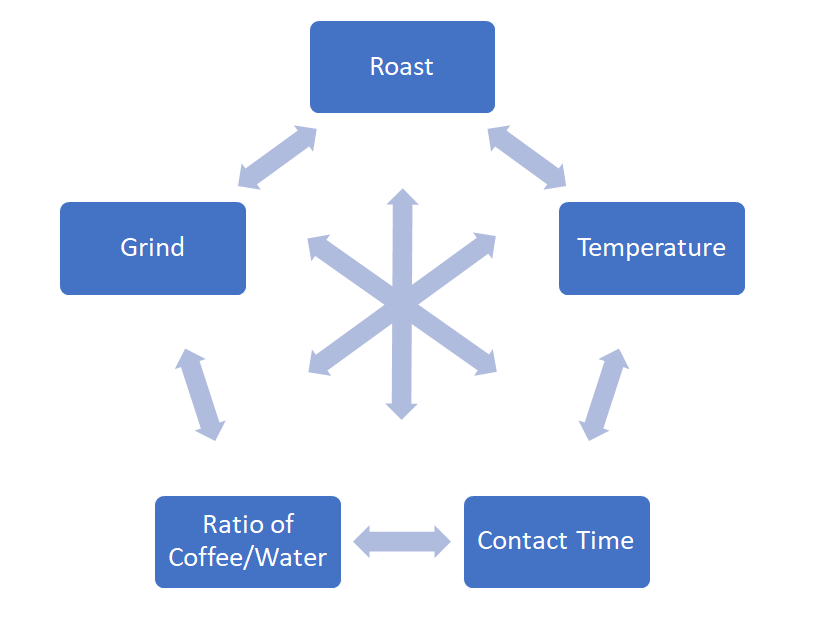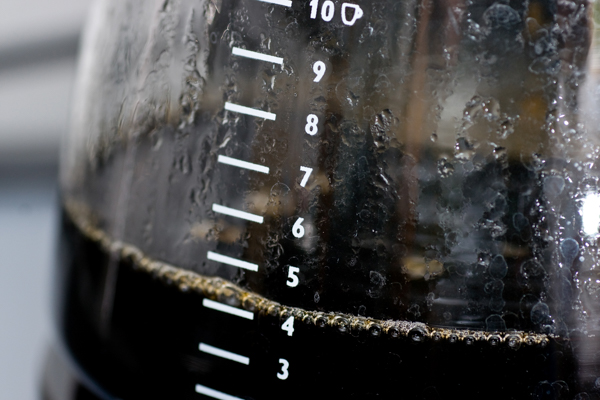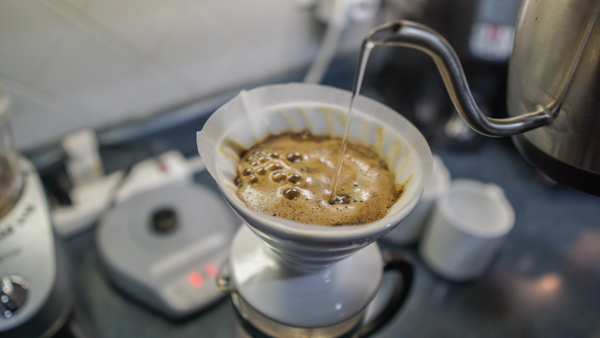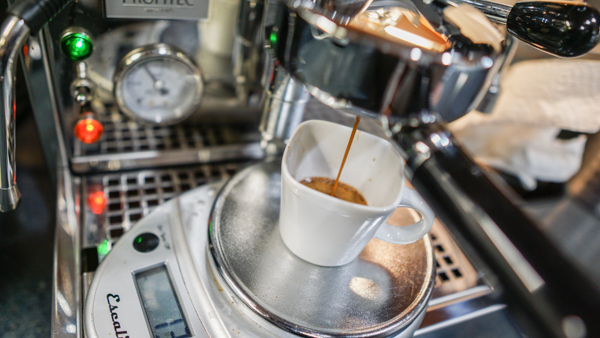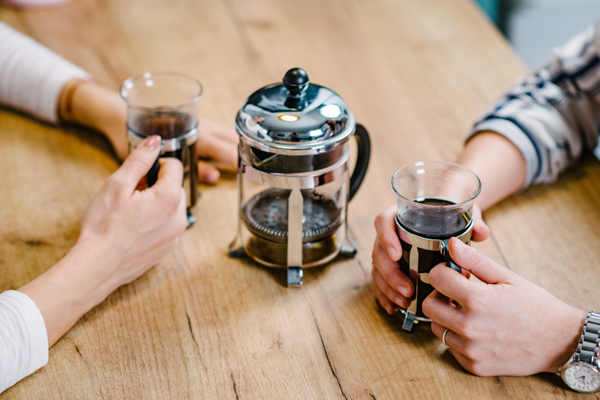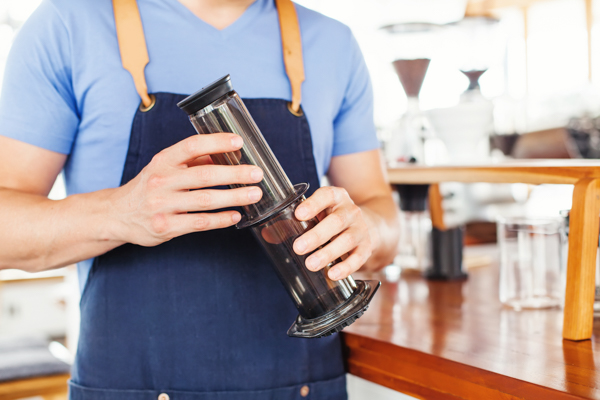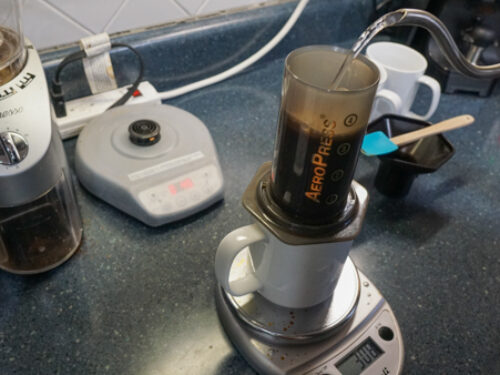Disclaimers: Our site uses demographic data, email opt-ins, display advertising, and affiliate links. Please check out our Terms and Conditions for more information.
Our coffee goal at Hipster Homesteaders is to use science and engineering to brew the best cups of coffee at home. As part of this quest, we are optimizing our coffee brewing recipes to reflect what we learn through research and at-home testing.
In this guide, we wanted to share our overall coffee brewing practices, theories, and best ratios for popular brewing implements. Likewise, at the end of each brewing summary you will be able to click out to our full recipes for step-by-step guides as well.
Coffee Brewing is a Solid-Liquid Extraction Process
At its core, coffee brewing is a solid-liquid extraction process. The brewing steps we follow are done to extract the desirable dissolved solids and chemicals from the coffee bean into water in order to have a flavorful cup.
For those who are science-focused, this presents a number of variables you can look into in order to fully understand what is going on. But to us, the main five variables worth optimizing around for any given bean and brewing method are the following:
- The Roast – The degree of roasting used causes chemical reactions that bring out different flavor components from more acidic and earthy notes in light roasts (intrinsic to the bean) to more caramelized notes in dark roasts.
- The Grind – The grind setting changes the surface area of which water can come into contact with.
- The Water Temperature – The rate of extraction of dissolved solids into water changes based on temperature.
- The Water Volume – Affects the final concentration of solids in any given cup.
- The Contact Time – How long the water comes in contact with the beans directly influences the rate of extraction.
On this site, we will primarily be looking at how these five variables interact with each other in coffee brewing and what you can do to control them in your favorite brewing methods.
Do dark roasts require coarse grinds or fine grinds? Do you extract more solids with a fine grind and higher water temperature or lower? What do you need to do differently for a full-contact French Press versus a limited-contact Pourover? These are some of the questions worth asking when thinking about the five variables outlined above.
To start, we want to breakdown our current favorite ratios of these for a few popular brewing implements. As we conduct more tests and optimize recipes, our ideal brew conditions may change and we'll update accordingly (plus add more brewing implements). For our full recipes, click the link at the end of each section for step-by-step guides and more detailed analyses!
Drip Coffee
In a way, it feels silly to even think of drip coffee machines in the conversation of ideal ratios if only because so much is automatic within the system. The biggest thing to keep in mind here is it is always best to make a full pot of coffee when brewing drip coffee. This ensures you have the proper packing of coffee grounds, avoids water channeling, and manages an ideal contact time as well. So if you have a five cup machine, make five cups. If you have a 12 cup machine, make twelve. And so on. As such, having an appropriately-sized machine for your needs will help out a fair bit here.
Our current preferred ratio for drip coffees is as follows:
- Roast: Any
- Coffee: 11 g per cup*
- Water: Automatic per system
- Contact Time: Automatic per system
- Temperature: 205°F
- Grind: Fine to Coarse (7 of 16 on Grinder)
*In general, we recommend 11 g per cup of coffee made. So for a five cup drip machine, we use 55 g. For 12 cup, 132 g.
Pourover
Pourover coffee is one of our favorites to make at home if only because there are a number of variables you can change to affect the final flavor of the coffee. Our below ratio is for a light-to-medium roast coffee- our current preferred style for this method. When brewing this one we recommend 30 seconds for blooming, then steadily pouring for approximately 1 1/2 to 2 minutes until you reach 300 g (you'll get a feel for this with practice), and then letting the coffee drain for an additional 30 seconds or until the grains start to become visible.
Our current preferred ratio for pourovers is as follows:
- Roast: Medium
- Coffee: 20 g per serving*
- Water: 300 g per serving (~40 g for blooming and 260 g for brewing)
- Contact Time: 3 minutes
- Temperature: 205°F
- Grind: Fine to Coarse (7 of 16 on Grinder)
*In general, we recommend a 15:1 water-to-grounds ratio per serving.
For our full pour over coffee recipe, click the previous link.
Espresso
Espresso machines run the gauntlet in terms of the settings you can change, but generally speaking most units will let you adjust the temperature while adjusting the pressure automatically within the unit. We leave ours at the factory setting for temperature which then allows us to only adjust our grind settings for any given roast. From there, we balance the grind to allow for a 25 to 35 second extraction for a fixed amount of water.
Our current preferred ratio for espressos is as follows:
- Roast: Any, but we prefer lighter roasts
- Coffee: 17 g per serving*
- Water: 34 g per serving
- Contact Time: 25 to 30 seconds
- Grind: Fine- to be dialed in with each new batch of coffee
*In general, we recommend a 2:1 water-to-grounds ratio if a different mass is required for your specific portafilter.
For our full espresso recipe, click the previous link.
French Press
When it comes to dark roasts, our preferred brewing method is the French Press. This full-contact process is fairly easy to use in balancing all the coffee ratios and letting the coffee extract over time. In fact, one of the harder parts about using this unit is simply pouring out into a cup and stopping just before empty to minimize coffee fines passing through the filter into your cup!
Our current preferred ratio for French Press is as follows:
- Roast: Dark / Full City
- Coffee: 20 g per serving
- Water: 300 g per serving
- Contact Time: 4 minutes
- Temperature: 198°F
- Grind: Coarse (14 of 16 on Grinder)
*In general, we recommend a 15:1 water-to-grounds ratio per serving.
For our full French Press recipe, click the previous link.
Aeropress
Aeropress is our preferred on-the-go brewing method as it is small (packable), easy to use, and makes significantly improved coffee over most methods available in hotel rooms. This one is also good to use in a pinch when visiting family who only ever make less-than-stellar drip coffee as well. Just grind your coffee, put your water in, let sit like a French Press, and plunge at the right moment!
Our current preferred ratio for the Aeropress is as follows:
- Roast: Medium
- Coffee: 20 g per serving*
- Water: 250 g per serving
- Contact Time: 1 minute 15 seconds
- Temperature: 205°F
- Grind: Fine (4 of 16 on Grinder)
*In general, we recommend a 12.5:1 water-to-grounds ratio per serving.
For our full Aeropress recipe, click the previous link.
More Updates Coming Soon
This guide is designed to share our optimized ratios for the five main variables mentioned at the start of this article and also link to our full recipes for each brewing method as well (when available). Whenever we add on a new brewing method or find ways to improve our recipes if our ratios change they will be updated here accordingly. As such, this guide should be considered a work in progress based on our “best of” settings for the time being!

